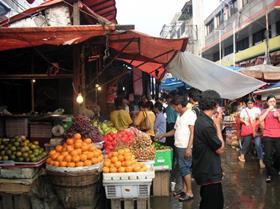
Indonesia’sfruit import sector is in rude health thanks to a booming domestic economyfuelled by falling interest rates, low inflation and an expanding middle classwith money to spend, industry experts reveal.
Expenditureon fresh foods is increasing, with the average monthly expenditure on freshfood at 52 per cent of the total household grocery budget in 2009 up from 50per cent in 2007, according to Nielsen Indonesia.
Fruitimports reached 593,662 tonnes in 2009 (valued at US$570m), up by 27 per centfrom the previous year (466,292 tonnes in 2008), representing an averageincrease annual of 32 per cent since 1995.
“Import growth has been good in the lastcouple of years, even during a period of world economic crisis,” Agus Ang, PTAbu Annugerah Utama told Fruitnet.com. “Now, with the lower import duty (nomore value-added tax), prices have become more affordable.”
Greaterdisposable incomes combined with increased consumer awareness of fruit’s healthbenefits are contributing to rising demand for imported fruit, industry sourcessaid.
“Consumersare still looking for a good (sweet) taste, but now consumers are also lookingfor health benefits, such as high vitamin and antioxidant content,” Hendry Sim,purchasing manager for PT Laris Manis Utama told Fruitnet.com.
The core fruits imported in 2009 weremandarins, apples and pears, mainly from China. Combined, these threecategories accounted for 73 per cent of Indonesia’s total fruit imports in year2009, with tropical fruits (mainly from Thailand) making up 17 per cent of allfruit imports.



